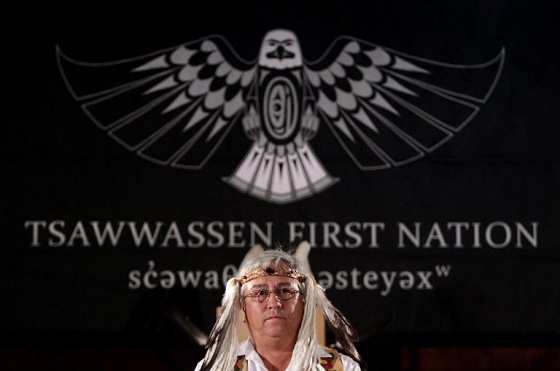Opinion
Boy Scouts of America changes name to ‘Scouting America’ to be ‘more inclusive’

From LifeSiteNews
The organization began welcoming homosexual-identifying boys in 2013, halted its ban on gay adult scout masters in 2015, announced in 2017 that girls who identify as ‘transgender’ could enter boys-only programs, and fully opened its membership to girls in 2018.
After years of turmoil and upheaval resulting in a major identity crisis, the Boy Scouts of America (BSA) announced today that it’s changing its name to Scouting America in order to be “more inclusive.”
The rebranding comes as the troubled organization emerges from bankruptcy after a tsunami of allegations of sexual abuse rocked the once-beloved, venerable institution geared to forming boys into men.
In all, more than 80,000 men came forward to file claims alleging that they were sexually abused while in BSA programs, resulting in a $2.4 billion bankruptcy plan that was approved by a federal judge last year.
The BSA began welcoming homosexual-identifying boys in 2013, and in 2015 halted its ban on gay adult scout masters.
In 2017, the organization announced that girls who identify as “transgender” could enter their boys-only programs. In 2018, the scouts fully opened their membership to girls.
As a result, Scouting America currently serves more than 176,000 girls and young women across all programs, including over 6,000 who have earned the rank of Eagle Scout, according to a press release.
In a video posted to X, CEO Roger Krone delivered a woke-drenched explanation for the change, saying it sends a “really strong message to everyone in America that they can come to this program, they can bring their authentic self, they can be who they are, and they will be welcomed here.”
The announcement met with a quick backlash on social media.
“This is an act of intentional demoralization against normal Americans and the former key constituency of the Boy Scouts: patriotic, hard working American boys and their families,” wrote William Wolfe, executive director of the Center for Baptist Leadership, on X.
“Everything good must be deformed in service of the revolution,” he added.
“The Boy Scouts chose the woke over the church kids that made up the backbone of their membership,” conservative author John Hawkins asserted. “Now they’re as good as dead. They deserve it. The kids didn’t. But the Boy Scouts do.”
“Once again, wokeness ruins everything,” outspoken conservative Hollywood star Matthew Marsden said.
“It started with allowing girls into the Boy Scouts. That’s when I pulled my son out of it,” Marsden noted. “This organization helped equip young boys with the skills to become real men and this move is another attack on them.”
“They will be financially bankrupt in 10 years,” he predicted.
Focal Points
Common Vaccines Linked to 38-50% Increased Risk of Dementia and Alzheimer’s

The single largest vaccine–dementia study ever conducted (n=13.3 million) finds risk intensifies with more doses, remains elevated for a full decade, and is strongest after flu and pneumococcal shots.
The single largest and most rigorous study ever conducted on vaccines and dementia — spanning 13.3 million UK adults — has uncovered a deeply troubling pattern: those who received common adult vaccines faced a significantly higher risk of both dementia and Alzheimer’s disease.
The risk intensifies with more doses, remains elevated for a full decade, and is strongest after influenza and pneumococcal vaccination. With each layer of statistical adjustment, the signal doesn’t fade — it becomes sharper, more consistent, and increasingly difficult to explain away.
And critically, these associations persisted even after adjusting for an unusually wide range of potential confounders, including age, sex, socioeconomic status, BMI, smoking, alcohol-related disorders, hypertension, atrial fibrillation, heart failure, coronary artery disease, stroke/TIA, peripheral vascular disease, diabetes, chronic kidney and liver disease, depression, epilepsy, Parkinson’s disease, cancer, traumatic brain injury, hypothyroidism, osteoporosis, and dozens of medications ranging from NSAIDs and opioids to statins, antiplatelets, immunosuppressants, and antidepressants.
Even after controlling for this extensive list, the elevated risks remained strong and remarkably stable.
Vaccinated Adults Had a 38% Higher Risk of Dementia
The primary adjusted model showed that adults receiving common adult vaccines (influenza, pneumococcal, shingles, tetanus, diphtheria, pertussis) had a:
38% increased risk of developing dementia (OR 1.38)
This alone dismantles the narrative of “vaccines protect the brain,” but the deeper findings are far worse.
Alzheimer’s Disease Risk Is Even Higher — 50% Increased Risk
Buried in the supplemental tables is a more shocking result: when the authors restricted analyses to Alzheimer’s disease specifically, the association grew even stronger.
50% increased risk of Alzheimer’s (Adjusted OR 1.50)
This indicates the effect is not random. The association intensifies for the most devastating subtype of dementia.
Clear Dose–Response Pattern: More Vaccines = Higher Risk
The authors ran multiple dose–response models, and every one of them shows the same pattern:
Dementia (all types)
From eTable 2:
- 1 vaccine dose → Adjusted OR 1.26 (26% higher risk)
- 2–3 doses → Adjusted OR 1.32 (32% higher risk)
- 4–7 doses → Adjusted OR 1.42 (42% higher risk)
- 8–12 doses → Adjusted OR 1.50 (50% higher risk)
- ≥13 doses → Adjusted OR 1.55 (55% higher risk)
Alzheimer’s Disease (AD) Shows the Same—and Even Stronger—Trend
From eTable 7:
- 1 dose → Adjusted OR 1.32 (32% higher risk)
- 2–3 doses → Adjusted OR 1.41 (41% higher risk)
- ≥4 doses → Adjusted OR 1.61 (61% higher risk)
This is one of the most powerful and unmistakable signals in epidemiology.
Time–Response Curve: Risk Peaks Soon After Vaccination and Remains Elevated for Years
Another signal strongly inconsistent with mere bias: a time-response relationship.
The highest dementia risk occurs 2–4.9 years after vaccination (Adjusted OR 1.56). The risk then slowly attenuates but never returns to baseline, remaining elevated across all time windows.
After 12.5 years, the risk is still meaningfully elevated (Adjusted OR 1.28) — a persistence incompatible with short-term “detection bias” and suggestive of a long-lasting biological impact.
This pattern is what you expect from a biological trigger with long-latency neuroinflammatory or neurodegenerative consequences.
Even After a 10-Year Lag, the Increased Risk Does Not Disappear
When the authors apply a long 10-year lag — meant to eliminate early detection bias — the elevated risk persists:
- Dementia: OR 1.20
- Alzheimer’s: OR 1.26
If this were simply “people who see doctors more often get diagnosed earlier,” the association should disappear under long lag correction.
Influenza and Pneumococcal Vaccines Drive the Signal
Two vaccines show particularly strong associations:
Influenza vaccine
- Dementia: OR 1.39 → 39% higher risk
- Alzheimer’s: OR 1.49 → 49% higher risk
Pneumococcal vaccine
- Dementia: OR 1.12 → 12% higher risk
- Alzheimer’s: OR 1.15 → 15% higher risk
And again, both exhibit dose–response escalation — the hallmark pattern of a genuine exposure–outcome relationship.
Taken together, the findings across primary, supplemental, dose–response, time–response, stratified, and sensitivity analyses paint the same picture:
• A consistent association between cumulative vaccination and increased dementia risk
• A stronger association for Alzheimer’s than for general dementia
• A dose–response effect — more vaccines, higher risk
• A time–response effect — risk peaks after exposure and persists long-term
• Influenza and pneumococcal vaccines strongly drive the signal
• The association remains after 10-year lag correction and active comparator controls
This is what a robust epidemiologic signal looks like.
In the largest single study ever conducted on vaccines and dementia, common adult vaccinations were associated with a 38% higher risk of dementia and a 50% higher risk of Alzheimer’s disease. The risk increases with more doses, persists for a decade, and is strongest for influenza and pneumococcal vaccines.
Epidemiologist and Foundation Administrator, McCullough Foundation
Support our mission: mcculloughfnd.org
Please consider following both the McCullough Foundation and my personal account on X (formerly Twitter) for further content.
FOCAL POINTS (Courageous Discourse) is a reader-supported publication.
To receive new posts and support my work, consider becoming a free or paid subscriber.
Opinion
The day the ‘King of rock ‘n’ roll saved the Arizona memorial

“As we express our gratitude, we must never forget that the highest appreciation is not to utter words but to live by them.”
— President John F. Kennedy, visiting the Arizona Memorial on June 9, 1963
I was on an Aston Hotels media junket to Hawaii, and I had a morning off.
My wife took our daughter Rica, to spend a day at Waikiki beach, while I headed to Pearl Harbor on a bus.
It was my only chance to see the Arizona Memorial, and I was determined to do so.
A small ferry boat takes you there, and I have to say, it is a silent trip.
Everyone on board, seemed to feel the same weight of the moment.
The memorial is simple, but very impactful, to the say the least.
A list of the names, of the 1,177 sailors who died on Dec. 7, 1941, is posted along a wall.
That’s a lot of sailors, to go down with the ship, folks.
The Japanese attack on Pearl Harbor began at 7:55 that morning. The entire attack took only one hour and 15 minutes.
But the devastation, was immense.
Of the eight U.S. battleships present, all were damaged and four were sunk. All but Arizona were later raised, and six were returned to service during the war.
The Japanese also sank or damaged three cruisers, three destroyers, an anti-aircraft training ship, and a minelayer. More than 180 U.S. aircraft were destroyed.
Only six sailors were rescued from the burning USS Arizona, by a sailor from the nearby repair ship USS Vestal.
There is no evidence of men being trapped alive within the submerged hull of the Arizona after the ship settled on the harbor bottom, unlike on other ships like the USS Oklahoma and USS West Virginia, where trapped sailors were heard tapping on the hull for days.
SCUBA technology did not exist at that time, but at least one rescue was successful.
Civilian yard worker Julio DeCastro led a team that used pneumatic hammers to cut through the hull of the capsized USS Oklahoma and rescued 32 men who had been trapped for hours.
No U.S. aircraft carriers were present at Pearl Harbor during the attack, as USS Enterprise, USS Lexington, and USS Saratoga were all at sea on missions, while the six Japanese carriers that attacked; Akagi, Kaga, Sōryū, Hiryū, Shōkaku, Zuikaku — all returned to Japan safely after the raid, though most were sunk later in the war.
I only remember one moment of that day. A young Japanese woman dropped a garland of flowers, into the water above the wreck.
Like magic, it floated directly over the length of the ship, which is still leaking oil.
A moment of time, I can never forget.
Most people don’t know, that the Airzona Memorial almost didn’t happen.
If not for Elvis Presley.
In the early 1960s, fundraising for the memorial had stalled.
Less than half of the roughly $500,000 needed had been raised, and the project was slipping from view.
After his manager, Colonel Tom Parker, read about the struggle, Elvis organized a benefit concert in Hawaii.
Newly discharged from the U.S. Army and on his way to film Blue Hawaii — the King stepped in to help without hesitation.
With one carefully staged benefit at Pearl Harbor’s Bloch Arena on March 25, 1961, he reignited public interest, raising over US $60,000 (equivalent to millions today) for the stalled fundraising effort, which helped push President John F. Kennedy and Congress to finish the job.
The memorial opened the following year.
Bloch Arena on the Navy base became the venue, and Parker handled the details with a fundraiser’s ruthlessness: tickets would range from $3 to $100, and no complimentary tickets would be issued — not even to admirals or VIPs.
Reports from the time underscore Parker’s insistence that everyone pay, a point that generated headlines and maximized proceeds.
A crowd of about 4,000 packed the hall to see Elvis in his gold lamé jacket deliver a rare live set — one of only a handful of concerts he performed between his Army service and the 1968 “Comeback Special.”
He later admitted forgetting lyrics due to being out of practice but was grateful for the crowd’s noise, which covered his mistakes.
He would visit the memorial in 1965 and place a wreath there, showing his deep respect.
The Arizona, launched in June 1915, measured 608 ft, with a beam of 97 ft. She was fully modernized in 1929, after which she was crewed by 92 officers and 1,639 enlisted men.
A Pennsylvania class battleship, she was the flagship of Battleship Division One at the time.
The final living survivor of the Arizona, Lou Conter, died last year, on April 1, 2024.
At Pearl Harbor, the Arizona was hit by four bombs just after 8 a.m., the final one of these is believed to have gone through the armoured deck and blown up the ship’s forward magazines with devastating effects.
Both the captain of the Arizona, Franklin Van Valkenburgh, and rear admiral Isaac Campbell Kidd, the head of the Battleship Division One were killed on the bridge of the Arizona.
More than two million people visit the memorial each year. It is only accessible by boat and straddles the sunken hull of the Arizona, without touching it.
THE MAKICHUK REPORT is free today.
But if you enjoyed this post, you can tell THE MAKICHUK REPORT that their writing is valuable by pledging a future subscription.
You won’t be charged unless they enable payments.
-

 Business2 days ago
Business2 days agoRecent price declines don’t solve Toronto’s housing affordability crisis
-

 MAiD18 hours ago
MAiD18 hours agoFrom Exception to Routine. Why Canada’s State-Assisted Suicide Regime Demands a Human-Rights Review
-

 MAiD2 days ago
MAiD2 days agoHealth Canada report finds euthanasia now accounts for over 5% of deaths nationwide
-

 Daily Caller2 days ago
Daily Caller2 days agoTech Mogul Gives $6 Billion To 25 Million Kids To Boost Trump Investment Accounts
-

 Automotive1 day ago
Automotive1 day agoPower Struggle: Governments start quietly backing away from EV mandates
-

 Energy2 days ago
Energy2 days agoUnceded is uncertain
-

 Business16 hours ago
Business16 hours agoCarney government should privatize airports—then open airline industry to competition
-

 Business1 day ago
Business1 day agoNew Chevy ad celebrates marriage, raising children









